The signs on the airport luggage carts read “Welcome to friendly Los Angeles.” For sure, the City of Angels is its own kind of place with some degree of “friendly.” With warm sunlight and palm trees, what’s not to like? Yet navigating LAX and seeing traffic crawl over the concrete freeways, you realize life here isn’t easy. And if the car doesn’t drop you off in the right spot, you can accumulate quite a few steps on your tracker trying to find the door to the Convention Center.
Other things set LA apart. In San Francisco or in Seattle, one dealer shared, people ask you a lot of questions. In LA, customers know what they want. They just come into the booth, point to things, and leave with them. That may be an oversimplification or an apt description, but for sure this crowd has a unique mission. And while many of the dealers repeat other West Coast shows, that mission makes the LA Art Show what it is.

It had been six or so years since we had been to The LA Art Show, and with a pandemic in between, things have changed. For one thing, the show has new owners. There also might be fewer dealers, with wider aisles separating the art, although crowds seemed to fill in the gaps during the day on our Saturday visit. Things were a little more chic this time around with more eye-candy art. We missed the poster dealers and the booth from the ArtCenter College of Design. Still, there was more than enough to fill an afternoon with meaningful engagement.
Entering the show, we broke the customary rule of circulation and took a hard turn left. Convention has it that most showgoers turn right. As contrarians, we figured we could spend more time with dealers on this route while crowds fill the hall.
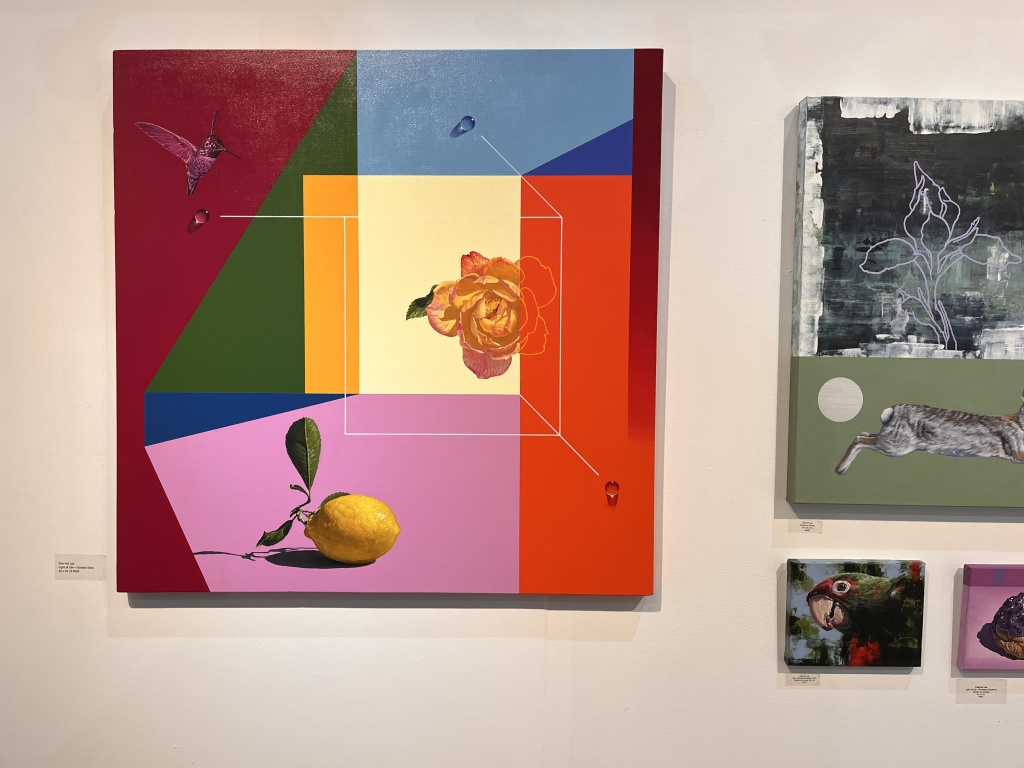
The first booth we stopped in was a self-representing artist named Paul Art Lee. The colorful paintings and geometric shapes are juxtaposed with symbolic objects. It didn’t take long to realize the images were spiritual – Paul is a pastor and artist. While the symbolism likely adds to the lure for some people, the works seem to stand on their own without knowing his background.
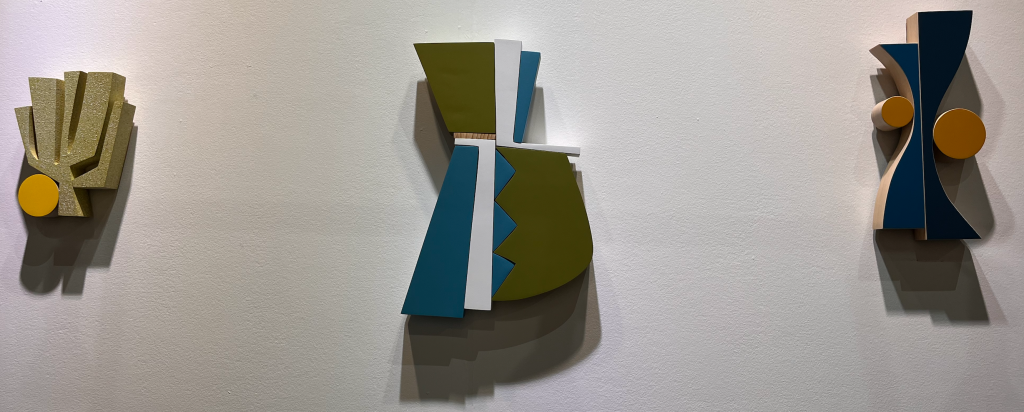
Bruno Massa from Paris mounted a one-person exhibition, featuring New Jersey artist Scott Troxel. A sculptor primarily in wood, Troxel has done some large installations in the past. For this show, a body of small wood relief assemblage sculptures greet the West Coast collectors. Made of maple, poplar, and occasionally mahogany wood, Troxel’s collage-driven sculpture consists of hand-made wooden shapes painted in flat color. The spatial relationship between different abstract shapes feels intimate: circles are casually stacked, boxes aligned with a tiny gap. The carefree, random look is anything but spontaneous. The artist‘s meticulous craftsmanship is evident in the bevels of each edge that ensures each painted shape is as distinct as a character from each other. We did spot a few red dots. Glad those unique pieces won’t have to make a third trip across the Atlantic.
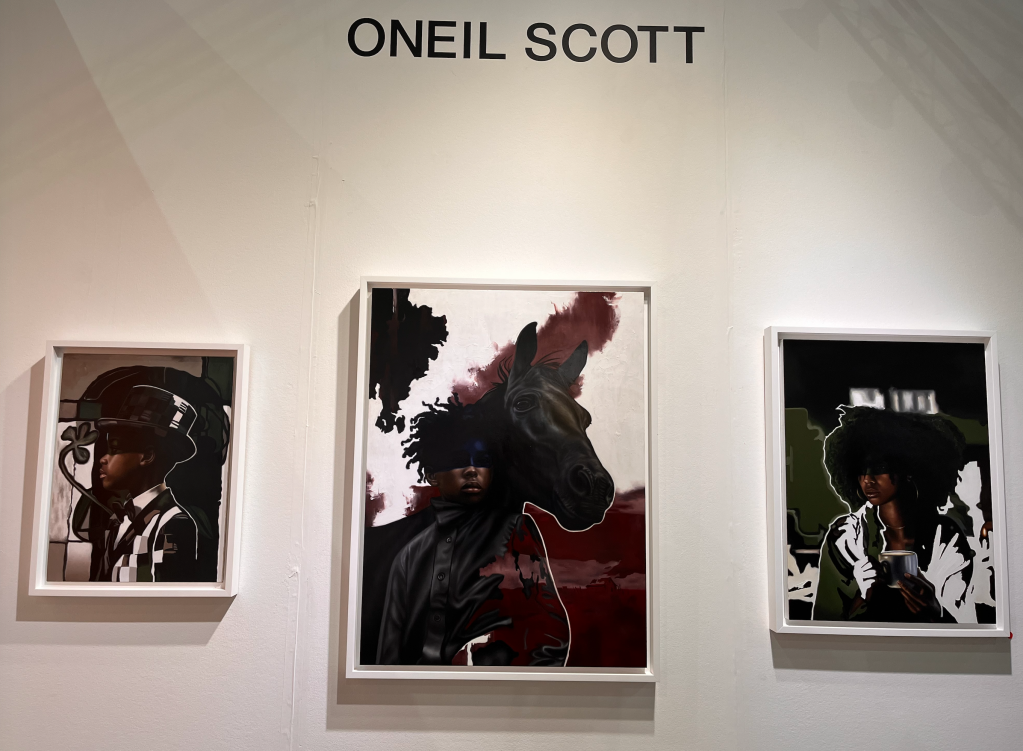
One of the highlights from our last trip to the LA Art Show was meeting Logan Maxwell Hagege from Maxwell Alexander Gallery. This year, there seemed to be a growing number of self-represented artists and many artist co-op types of special arrangements. At Tanya Weddemire Gallery of Brooklyn New York, Tanya introduced us to one of the artists she was showing, O’Neil Scott. Originally from Jamaica and mostly self-taught, Scott is currently living in the Philadelphia metro.
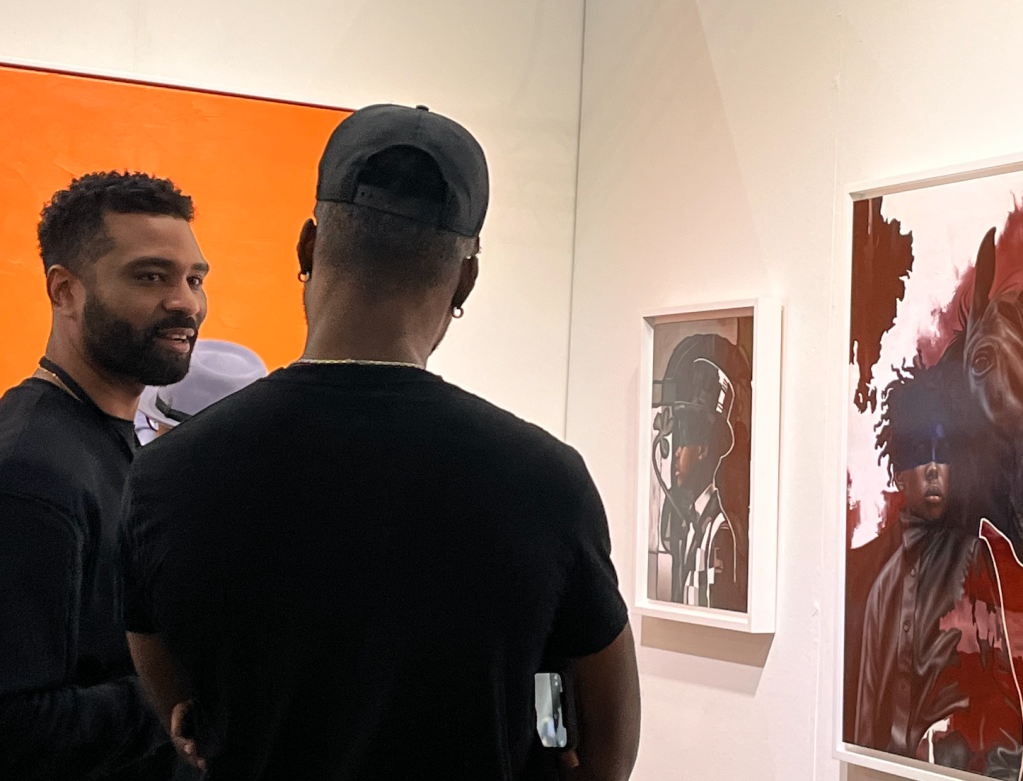
Three paintings from the “Distant Memories” series feature black portraits with shadows over their eyes against a narrative from their fragmented memories. Speaking of A Tale of Two Dreams, Scott mentioned that he lived in Arizona briefly when he was very young. Living close to a farm, he was able to see horses regularly and they suggest freedom and promise. We asked if the suggested stripes and blue overlay represented a flag. The thing about art, he told us, is it ends up also being about what the viewer thinks it’s about.
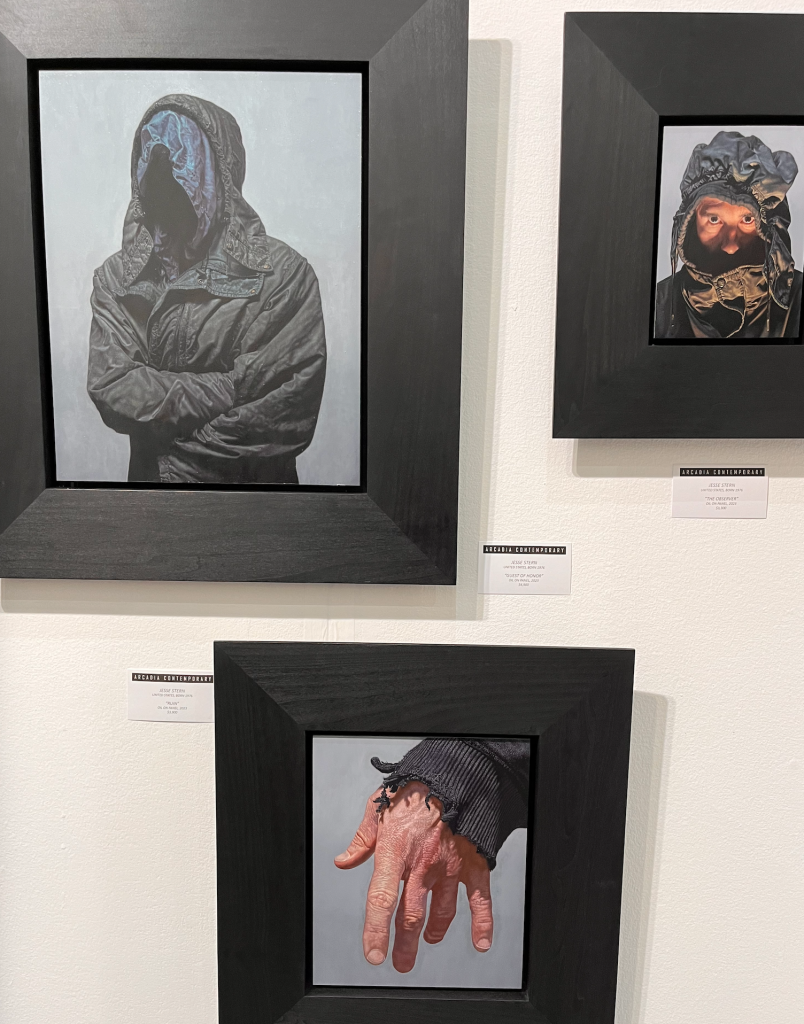
Arcadia Contemporary of New York City took a large space near the entrance. Even in a gallery with the most skilled representational artists, Jesse Stern’s work still stands out. Stern certainly has the technical skills that put him on the top list of hyper-realism painters. But it is his great taste that makes his work refreshingly original. In each of his small self-portraits, strong illuminating light that is often used for Vanity Fair type of celebrity photoshoots is unforgiven to his army-green rain parka. The crinkly and reflective texture takes the center stage with mesmerising patterns of light and shadow.
It takes courage to draw oneself in excruciating detail again and again. By making his own face as a prop to a worn jacket (and indeed, his face is in complete shadow in several works), Stern invites us to examine the intricate and abstract shapes that collectively make the case of ordinary clothing. In doing so, he objectifies realism portraits as the purest abstract.
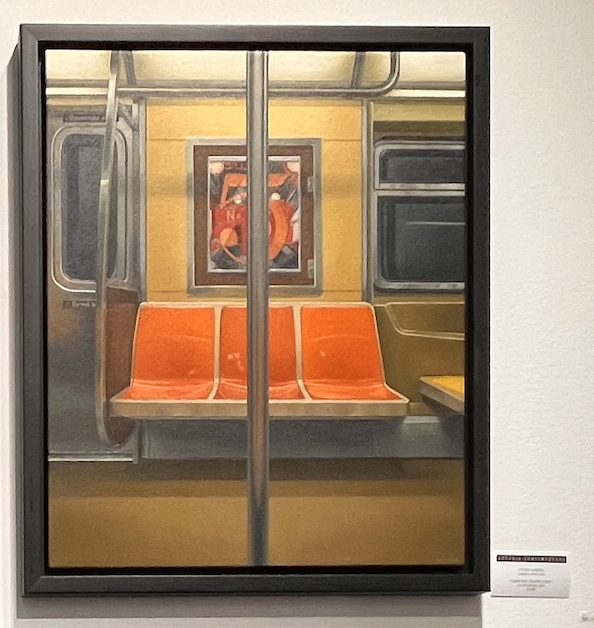
Also at Arcadia, the work of Peter Harris pulled us in. One example, #5 Subway, I saw the Figure 5, NYC showed the well-known Charles Demuth painting I Saw the Figure 5 in Gold painting appears on a poster inside a subway car. Other examples on display featured well-loved examples of famous art within these detailed works. The series may reach its limits, however. For now, the subway compositions are more of an appeal than the famous artwork depicted.
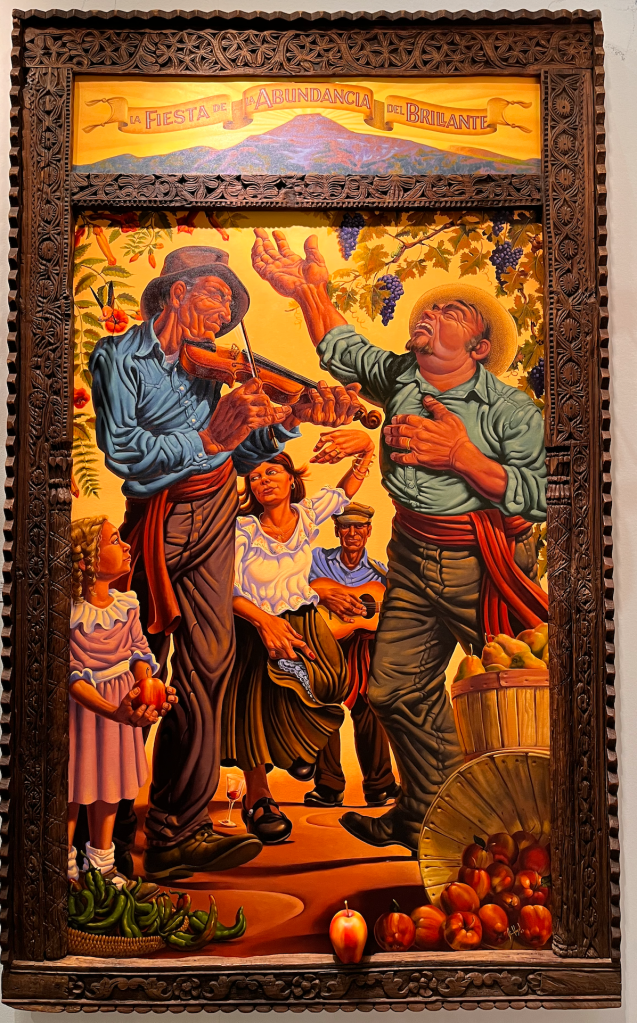
Blue Rain Gallery presented work by Jim Vogel including the very large Festival of Abundance and Brilliance. Painted to fill a found frame, the vibrant colors and warm aesthetic take us to a much different place and an earlier time. Perhaps opposite the biblical temptation, a wax apple sitting on the lower rim invites us to leave the complexities of our modern world and return to simpler pursuits.
A few galleries focus on secondary market, ranging from blue-chip artists like Chagall to a rediscovered French painter named Paul Rivorie. According to Keith Kelman of K. Nathan Gallery, all his Rivorie’s paintings are fresh to the market after being locked up for almost eight decades. He also showcases a large painting by Dennis Hare (below right). After seeing many artworks that utilize AI, visual illusion of infinite space or movement, I felt alive with the impasto, the brushstrokes, and the rough canvas surface itself from the signature style of Bay Area figurative movement. Paul told us he enjoys the painting in his living room and wasn’t sure why he brought it.
Across the aisle, Daphne Alazraki Fine Art of New York City brought a few modern pieces of the East coast. It would have been nice if Gene Davis’ color field painting was placed closer to John Opper’s abstract work (below right). In both paintings, the rhythmic patterns of pure colors are jazzy and warm.
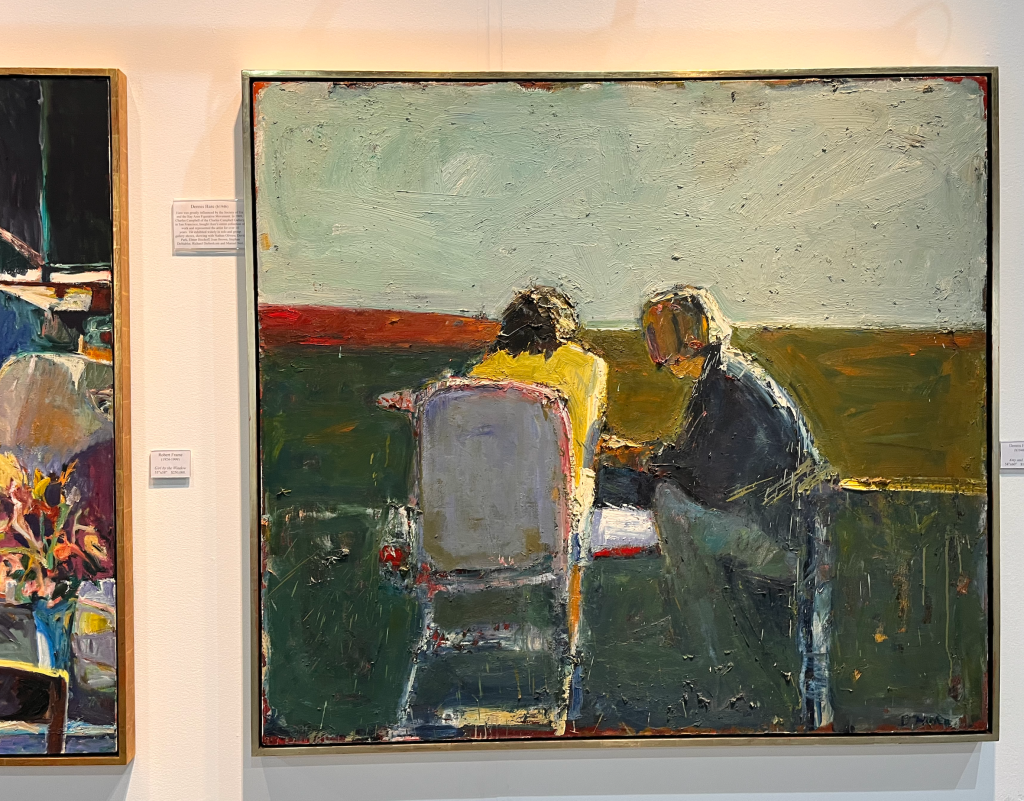
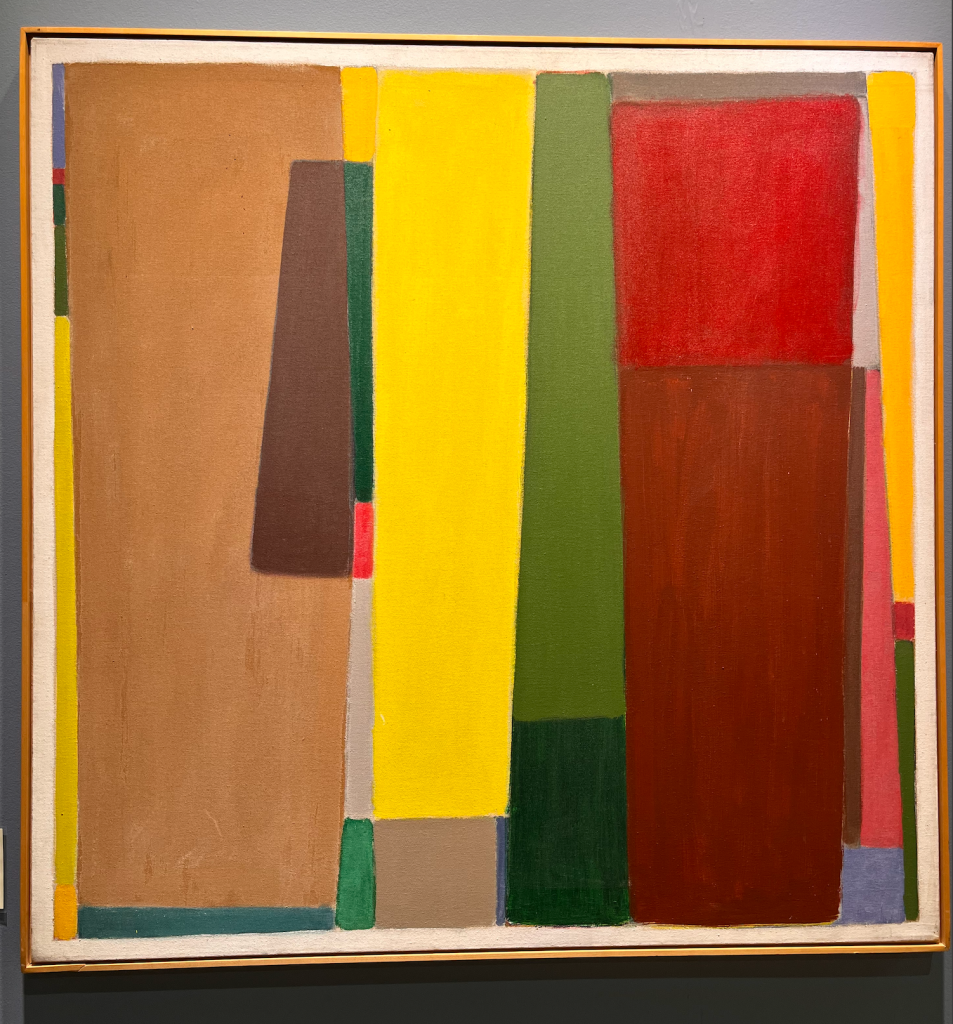
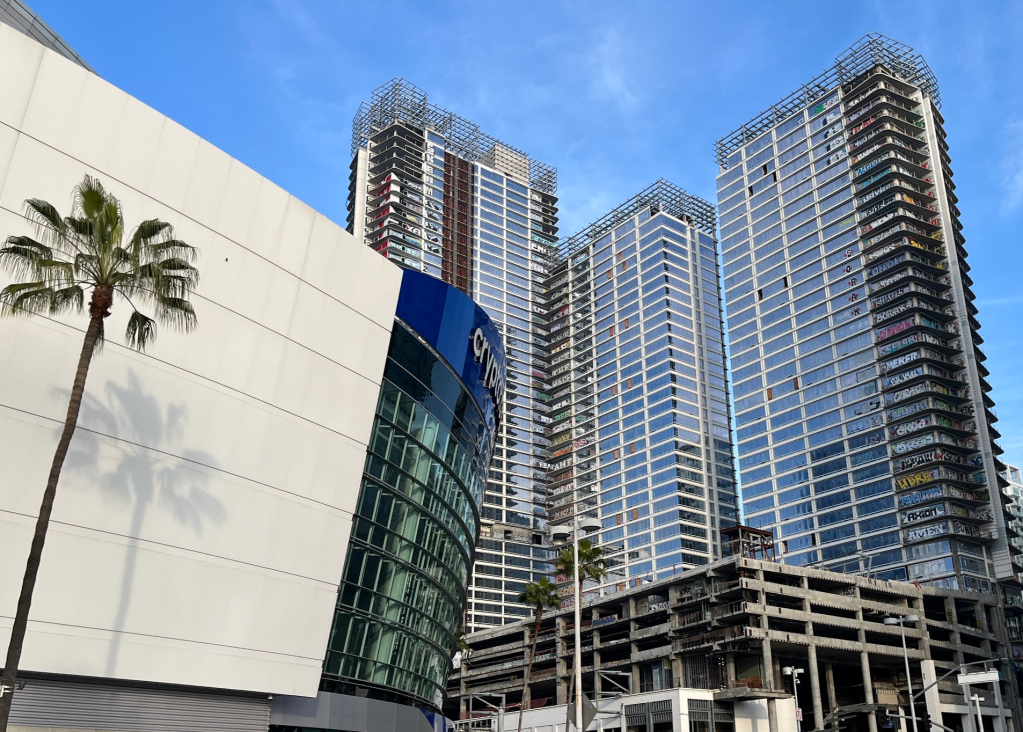
If sun-filled LA had shadows, the art show would be cast under one of the city’s largest community artworks, a residential skyscraper construction project caught in a financial trap and now covered in graffiti. It’s a nuisance for neighbors and city promoters, but likely gold for the folks at Beyond the Streets Publishing, which has a booth at the show offering books and t-shirts chronicling the culture of grit and grime that sooner or later feeds the beast of marketers, fashionistas and other areas.
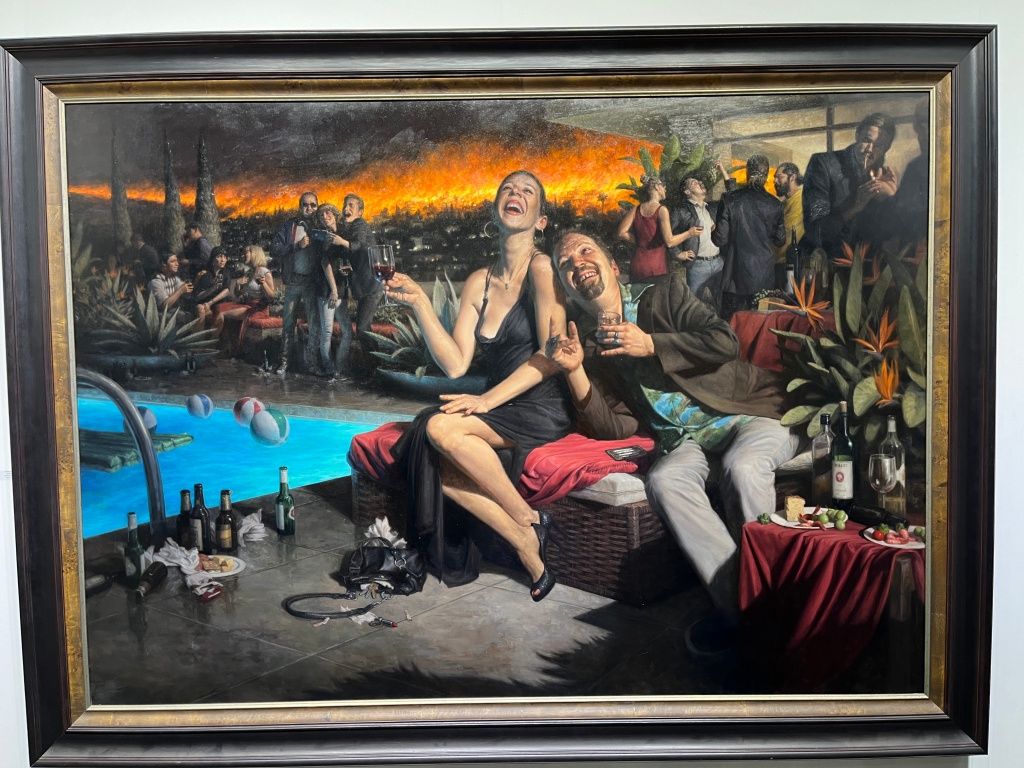
If there’s a single show-stopper here, it’s probably a work by Carl Dobsky at Copro Gallery titled Birds of Paradise. In a way, it recalls the work by Graydon Parrish at the New Britain Museum of American Art, The Cycle of Terror and Tragedy, September 11, 2001. Although, unlike the Parrish work, this is not about one event and there isn’t the same sense of terror about it, though the eventual result could be much worse. Here the burning hills brought about by a warming planet are juxtaposed against a lavish party on the grounds of a midcentury Southern California home. As slowly the horror unfolds, we go along humming with Peggy Lee as she sings “Is that all there is to a fire?”
And just then we realize the painting may be asking us to reflect for a moment on spending our Saturday in LA looking at art. For sure, there will be another party in LA and sooner or later, we’ll find ourselves back at the LA Art Show.
On the cover: “I” of the Beholder by Dain Yoon.
Discover more from Urban Art & Antiques
Subscribe to get the latest posts sent to your email.

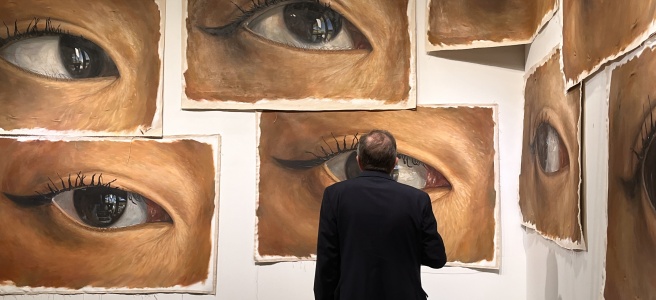

Hello friend, I enjoyed reading your
Art post. I subscribed. See you often. Have a happy and bright day🌷😸🌙💫🔆
LikeLiked by 1 person